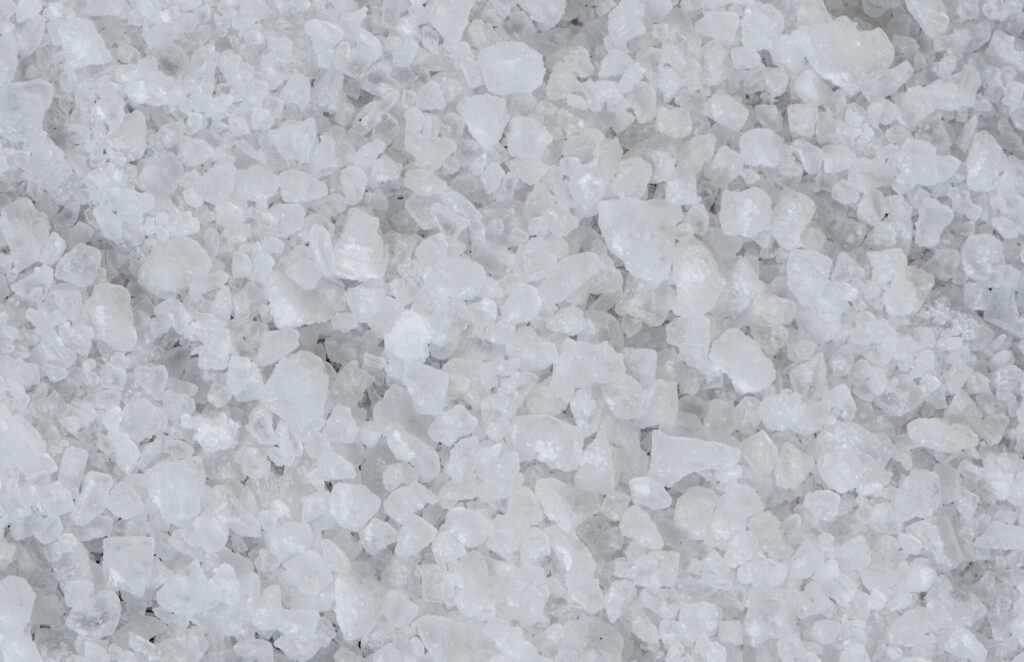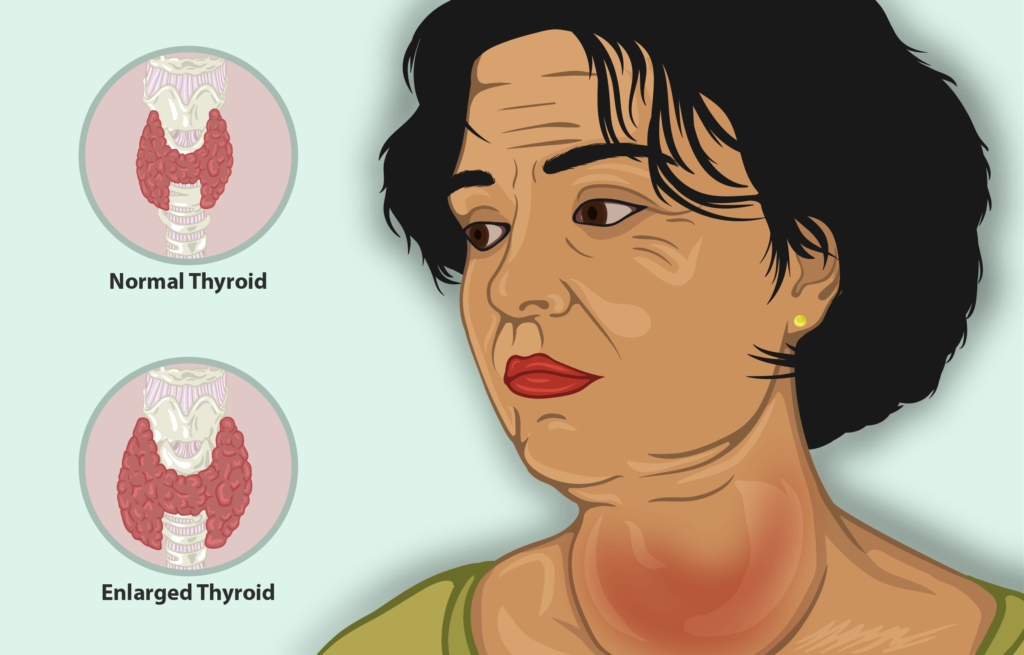
In the vast realm of culinary choices, even the seemingly simple decision of choosing the right salt for your kitchen can become a seasoned debate. Table salt vs. rock salt – the clash of these two common staples in kitchens worldwide extends beyond taste and texture, delving into health considerations that shape both the flavor of our dishes and our nutritional choices.
From the refined finesse of table salt, loaded with iodine for crucial thyroid support, to the more rustic charm of rock salt, boasting a natural mineral profile, each granule contributes to our flavor and nourishment. In this exploration, we’ll unravel the health nuances that make the choice between table salt or rock salt more than a mere culinary decision – it’s a conscious step towards a healthier and more mindful lifestyle. Join us as we sift through the granules, discovering the vital ingredients in the recipe for well-being.
Table Salt vs Rock Salt: Key differences
The choice between table salt and rock salt depends on various factors, including culinary use, health considerations, and personal preferences. Here are some key differences between the two:
Source
Table Salt: Sourced from underground salt deposits or extracted from seawater, table salt undergoes a meticulous refining process. This process involves the removal of impurities and the addition of specific elements for both taste and health considerations. Anti-caking agents are introduced to prevent clumping, ensuring a consistent and free-flowing texture. Additionally, iodine, a crucial nutrient for thyroid health, is often incorporated, fortifying table salt with an essential component for overall well-being.
Rock Salt: Mined from underground salt deposits, rock salt, or halite, retains a closer connection to its natural state. Its extraction involves minimal processing, allowing it to preserve a spectrum of minerals inherent in its composition. The unrefined nature of rock salt gives it a distinctive flavor profile, with variations in taste and color influenced by the minerals present in the salt deposits.
Composition

Table Salt: As a result of extensive refinement, table salt boasts a consistent composition. Beyond sodium chloride, it may contain added iodine, serving a dual purpose of enhancing flavor and addressing iodine deficiency concerns. Anti-caking agents contribute to its fine texture, making it a staple in everyday cooking and baking.
Rock Salt: Less refined than its counterpart, rock salt embraces its natural mineral diversity. The composition of rock salt can include calcium, potassium, magnesium, and other trace elements. This mineral-rich content imparts a nuanced taste and color to the salt, offering a sensory experience distinct from the more processed table salt.
Texture
Table Salt: With its finely ground consistency, table salt effortlessly dissolves in liquids, making it a versatile choice for various culinary applications. The uniform texture ensures an even distribution, enhancing the overall taste of dishes.
Rock Salt: Characterized by larger crystals, rock salt introduces a more robust texture to the culinary landscape. This coarser form makes it suitable for specific applications, such as in salt grinders or for creating a satisfying crust on meats during cooking. The crunch and burst of flavor from the coarse crystals add a sensory dimension to dishes.
Iodine content
Table Salt: The deliberate addition of iodine in table salt addresses a crucial health need – supporting thyroid function. This fortified iodine content contributes to the prevention of iodine deficiency, a condition that can have far-reaching health implications.
Rock Salt: While rock salt naturally contains various minerals, including some iodine, it is not consistently present in significant amounts. If iodine intake is a specific dietary concern, individuals may need to explore alternative sources beyond rock salt.
Health considerations
Table Salt: The iodine fortification in table salt supports thyroid health, playing a vital role in metabolic function. However, a cautious approach is necessary, as excessive consumption of refined table salt can contribute to health issues associated with elevated sodium intake, such as hypertension and cardiovascular concerns.
Rock Salt: The mineral diversity in rock salt adds a layer of potential health benefits, including trace elements that may complement overall nutrition. However, individuals should be mindful of its iodine content and consider alternative sources if maintaining adequate iodine levels is a priority.
Culinary Use
Table Salt: Its fine texture and easy dissolution make table salt a preferred choice for everyday cooking and baking. Its versatility extends to seasoning sauces, soups, and a wide array of dishes, ensuring a consistent and well-balanced flavor profile.
Rock Salt: With its coarse crystals and distinct texture, rock salt finds its niche in specific culinary applications. It shines when used in salt grinders, providing a hands-on approach to seasoning, and adds a delightful crunch when creating crusts on meats. The varied texture of rock salt introduces a sensory element to dishes, offering a unique culinary experience.
In navigating the choices between table salt and rock salt, an understanding of their sources, compositions, textures, and health implications becomes crucial. By appreciating the nuances of these salts, individuals can make informed decisions that align with their culinary preferences and health-conscious lifestyles.
What happens if you eat too much salt?
Excessive salt intake has been associated with several health risks, particularly concerning cardiovascular health.
- Hypertension (High blood pressure): One of the primary concerns associated with high salt intake is the development of hypertension. Excess salt can lead to an increase in blood volume and higher blood pressure, putting strain on the cardiovascular system. Prolonged hypertension is a major risk factor for heart disease and stroke.
- Cardiovascular diseases: Elevated sodium levels are linked to an increased risk of cardiovascular diseases, including coronary heart disease. The impact on blood pressure and the potential for arterial stiffness contribute to the overall cardiovascular burden.
- Kidney function: High sodium intake may have adverse effects on kidney function. The kidneys play a crucial role in maintaining sodium balance in the body. Prolonged high sodium levels can strain the kidneys, potentially leading to kidney disease over time.
- Edema and fluid retention: Excessive salt can cause water retention, leading to edema (swelling). This is particularly relevant for individuals with certain health conditions, such as congestive heart failure, where fluid balance is already compromised.
What is the daily salt intake limit?
Health organizations worldwide, including the World Health Organization (WHO) and the American Heart Association (AHA), recommend moderating salt intake. The general guideline is to consume less than 2,300 milligrams of salt per day, with an ideal target of 1,500 milligrams for certain populations.
Iodine deficiency concerns
Iodine is crucial for the synthesis of thyroid hormones, which are essential for the proper functioning of the thyroid gland. Iodine deficiency can lead to a range of health issues, collectively known as iodine deficiency disorders (IDD).
Health concerns due to iodine deficiency:

- Thyroid Dysfunction: The most significant consequence of iodine deficiency is thyroid dysfunction. The thyroid gland requires iodine to produce thyroid hormones, which regulate metabolism. Insufficient iodine can lead to conditions such as hypothyroidism, goiter, and even cretinism in severe cases.
- Cognitive Impairment: Iodine deficiency during pregnancy and early childhood can result in cognitive impairments in the offspring. Adequate iodine is crucial for the development of the fetal brain, and deficiency can lead to intellectual disabilities.
- Goiter: Iodine deficiency is a primary cause of goiter, the enlargement of the thyroid gland. The thyroid enlarges in an attempt to capture more iodine from the bloodstream, resulting in a visibly swollen neck.
Conclusion
So, in the eternal debate of Rock Salt vs Table Salt, and the choice between Table Salt or Rock Salt, it all boils down to your culinary compass. Table salt, refined and iodine-boosted, stands tall in everyday cooking, while rock salt, with its natural minerals and coarse texture, adds a pinch of flair to specific dishes.
Remember, moderation is key – whether you’re team Table Salt or Rock Salt. Let your taste buds guide you, but keep an eye on your health compass. Each grain tells a story, and your kitchen choices shape the narrative. So, spice up your dishes, savor the flavors, and may your culinary adventures be seasoned with a dash of mindful choice.
FAQs
Q1: Is rock salt healthier than table salt?
Both have their merits. Table salt is often fortified with iodine, crucial for thyroid health. Rock salt, less processed, retains natural minerals. It depends on your health needs and preferences.
Q2: Can I use rock salt in place of table salt for cooking?
Absolutely! While rock salt has larger crystals, it can be a flavorful substitute. Adjust quantities to taste, especially in recipes requiring fine salt distribution.
Q3: Does iodine in table salt matter for everyone?
Iodine is vital for thyroid function. If your diet lacks iodine-rich foods, table salt ensures sufficient intake. However, if you have varied dietary sources, rock salt may be suitable.
Q4: Is rock salt a healthier choice due to its natural minerals?
It offers additional minerals, but the overall impact depends on your diet. If you seek these minerals, rock salt is a good source, but variety in your food choices is key.
Q5: Can I use rock salt in baking like table salt?
Yes, but be mindful of the coarser texture. Consider grinding it finer if needed. It can add a unique touch to certain baked goods.
Q6: Does table salt always contain additives?
Yes, it often includes anti-caking agents to prevent clumping. Some variants may also have iodine. Check labels for specifics.
Q7: Can rock salt be used in a salt grinder?
Absolutely! The coarse texture of rock salt can enhance the grinding experience, adding a delightful crunch to your dishes.
Q8: Are there health risks associated with excessive salt consumption?
Yes, both salts contribute to sodium intake. Excessive sodium can lead to health issues like hypertension. Moderation is key for overall well-being.
Q9: Which salt is better for creating a salt crust on meats?
Rock salt’s coarse crystals work wonders for meat crusts. Their size adds a delightful crunch and enhances the overall texture.
Q10: Can I combine both salts in my cooking?
Yes. Experiment with ratios based on your taste preferences. Combining them can provide a nuanced flavor profile to your dishes.